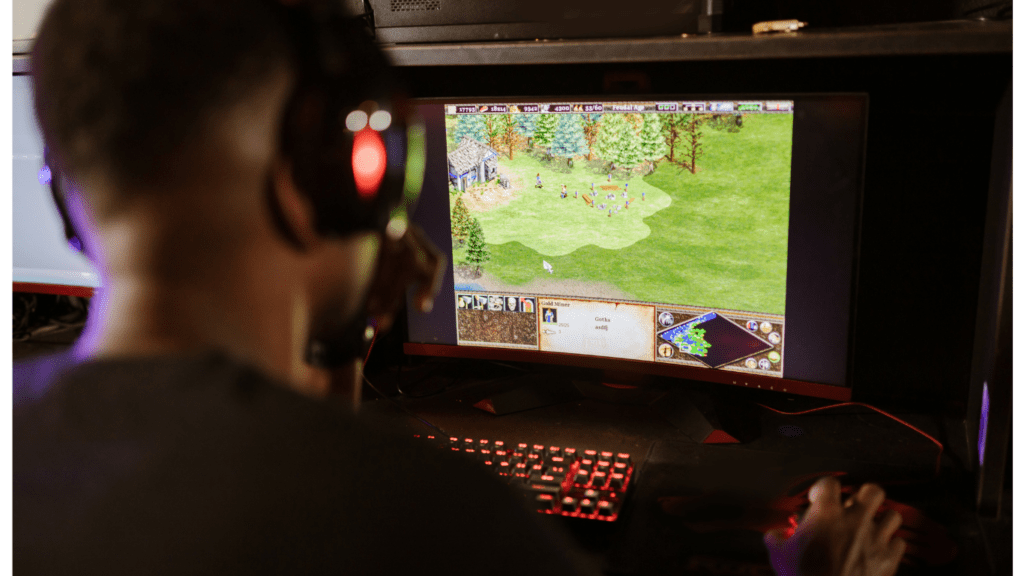The Emergence of Game Streaming Services
What Are Game Streaming Services?
Game streaming services allow users to stream games from remote servers to their devices via the internet.
These platforms eliminate the need for expensive hardware, enabling gamers to play high-quality titles on various devices.
Services like:
- Twitch
- YouTube Gaming
- Google Stadia
- NVIDIA GeForce NOW
- Facebook Gaming
deliver live game streams where viewers watch players in real time, while platforms like Google Stadia and NVIDIA GeForce NOW offer interactive streaming, letting users actually play games hosted on powerful data centers.
Historical Overview and Milestones
The evolution of game streaming services began in the early 2010s.
Twitch, launched in 2011, quickly became a pioneer in live game streaming, amassing millions of active users.
In 2015, YouTube Gaming entered the scene, leveraging YouTube’s popularity to cater to the gaming community.
Facebook Gaming followed in 2018, emphasizing social connectivity.
Interactive game streaming saw significant advancements with the launch of PlayStation Now in 2014, providing access to a library of PlayStation titles.
In 2019, Google Stadia introduced cloud gaming by offering AAA games on various devices without needing consoles.
A notable milestone in 2020 was Microsoft’s rollout of Project xCloud, integrating it with Xbox Game Pass Ultimate, enabling cloud-based gaming on mobile devices.
How Game Streaming Services Are Changing Gaming
1. Impact on Game Development
Game streaming services have transformed game development. Developers now prioritize optimized streaming performance alongside traditional gameplay mechanics.
This shift requires a different approach to resource management to ensure minimal latency.
Stadia, for instance, encourages development strategies focused on cloud-first framework, affecting design decisions from the ground up.
Additionally, indie developers benefit significantly from this model, as it reduces the barriers to entry by eliminating the need for players to possess advanced hardware.
Featuring diverse and innovative titles, streamers showcase more games, broadening exposure and facilitating market penetration.
This increased visibility, backed by real-time audience interaction, directly influences game adoption rates and developmental priorities.
2. Shifts in Gaming Culture and Communities
Game streaming has redefined gaming culture and communities.
Livestreaming platforms foster real-time interactions among players, streamers, and viewers, creating a more inclusive and engaging atmosphere.
Followers and subscribers actively participate through chat rooms, impacting livestream content.
Exclusive events and game release previews enhance community engagement, adding to the excitement and anticipation.
Streamers often act as community leaders, shaping trends and preferences within the gaming ecosystem.
Additionally, the rise of content creators has introduced a new dimension to gaming, where personalities matter as much as the games they play.
This evolving dynamic has shifted power from traditional media outlets to individual content creators, democratizing content dissemination within the gaming community.
Comparing Game Streaming to Traditional Gaming

Accessibility and User Experience
Game streaming services elevate accessibility by removing the need for high-end hardware.
Users access games on various devices, including smartphones and tablets, without requiring expensive equipment.
This wide accessibility democratizes gaming, allowing more individuals to participate.
Traditional gaming, however, often demands significant investments in consoles or PCs.
Players must upgrade hardware regularly to keep up with new game requirements.
This keeps the barrier to entry high and excludes potential gamers with limited budgets.
In terms of user experience, streaming services offer seamless updates and instant access to new titles. Players no longer deal with lengthy downloads or physical media.
Lag and latency issues can arise if the internet connection is unstable, but high-speed internet mitigates these problems effectively.
Conversely, traditional gaming provides a stable experience unaffected by internet issues but necessitates physical storage, installation, and manual updates.
Cost and Business Models
Game streaming services typically follow subscription-based models, where users pay a recurring fee for access to a library of games.
Examples include PlayStation Now, Xbox Game Pass, and Google Stadia. This reduces the upfront cost for consumers and allows them to experience a breadth of titles without purchasing each one individually.
These models favor budget-conscious gamers who prefer variety over ownership.
Traditional gaming relies on one-time purchases of game titles, which can be expensive. Major releases often exceed $60, not including potential expansions or downloadable content.
Over time, these costs accumulate, forming a significant financial burden for avid gamers.
Business models in game streaming services also include free-to-play options supported by ads or microtransactions.
This model attracts a broad audience, particularly those unwilling to commit to subscriptions.
Traditional gaming has also adopted microtransactions, but they are less integral to its overall business strategy, which focuses more on initial game sales.
| Feature | Game Streaming Services | Traditional Gaming |
|---|---|---|
| Accessibility | High, no need for high-end hardware | Limited, requires high-end consoles or PCs |
| User Experience | Seamless updates, instant access, potential lag issues | Stable experience, physical media required |
| Cost | Subscription-based, lower upfront cost | One-time purchases, higher upfront cost |
| Business Models | Subscription, free-to-play with ads/microtransactions | One-time purchase, expansions, fewer ad-supported models |
The Future of Gaming with Streaming Services
Innovations and Trends
Game streaming services drive innovations that reshape gaming.
Cloud gaming platforms like Google Stadia and Microsoft’s xCloud demand low latency and high-quality graphics, pushing advancements in Internet infrastructure.
5G technology reduces latency significantly, improving the user experience for real-time gaming.
Artificial Intelligence (AI) enhances gameplay by personalizing recommendations and in-game experiences.
AI in game streaming services can adapt game difficulty based on player skills, creating more engaging experiences.
Blockchain technology ensures secure transactions and ownership in virtual economies.
NFTs (Non-Fungible Tokens) in game streaming help in safeguarding digital assets, allowing players to trade unique in-game items transparently.
Predictions for the Next Decade
In the next decade, I foresee game streaming services integrating with virtual reality (VR) and augmented reality (AR) to create immersive experiences.
VR and AR headsets, combined with game streaming, will minimize hardware constraints and enhance accessibility.
Subscription models will likely dominate, offering access to vast libraries of games instead of individual purchases.
This shift will make gaming more affordable and varied for players, increasing consumer choice and reducing financial barriers.
Cross-platform play will continue to grow, enabling users to switch devices seamlessly without losing game progress.
Improved server technologies will support this enhancement, ensuring smoother transitions and consistent gameplay across different platforms.
AI-driven content creation might emerge, where games generate dynamic content in real-time based on player actions.
This would offer more personalized and diverse gaming experiences, keeping users engaged longer.
Overall, game streaming services will drive significant transformations in gaming, from technological advancements to new business models, shaping the future landscape of the industry.


 Rosendor Smithiery, the founder of Infinity Game Saga, plays a pivotal role in shaping the direction and content of the platform. As the visionary behind the site, Rosendor’s leadership and passion for gaming drive the company’s mission to deliver top-notch gaming coverage. In addition to his executive role, he actively contributes to writing articles, offering his deep insights and expert perspectives on various gaming topics.
Rosendor’s hands-on approach ensures that Infinity Game Saga maintains a high standard of quality and relevance. His articles often explore emerging trends, provide detailed analyses, and offer unique viewpoints on the gaming industry. By blending his leadership with his writing, Rosendor enriches the content and connects with readers, solidifying Infinity Game Saga’s reputation as a leading voice in gaming media.
Rosendor Smithiery, the founder of Infinity Game Saga, plays a pivotal role in shaping the direction and content of the platform. As the visionary behind the site, Rosendor’s leadership and passion for gaming drive the company’s mission to deliver top-notch gaming coverage. In addition to his executive role, he actively contributes to writing articles, offering his deep insights and expert perspectives on various gaming topics.
Rosendor’s hands-on approach ensures that Infinity Game Saga maintains a high standard of quality and relevance. His articles often explore emerging trends, provide detailed analyses, and offer unique viewpoints on the gaming industry. By blending his leadership with his writing, Rosendor enriches the content and connects with readers, solidifying Infinity Game Saga’s reputation as a leading voice in gaming media.
